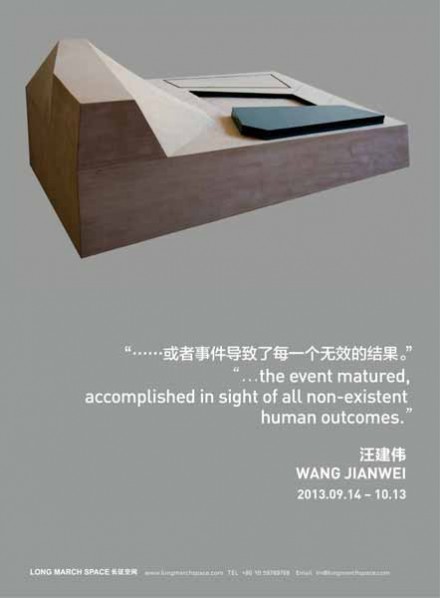
“I work for possibilities.”
Born 1958 in Sichuan Province, China, Wang Jianwei has been a pioneer in the Chinese contemporary art scene since the 1970s. Academically trained as a painter, he dedicated much of his school years at China Academy of Art, Hangzhou, reading about existentialist philosophy and Chinese history. This led him to years of experimentation in conveying complex ideas with painting before shifting his focus to multimedia installation. ‘Connection’ and ‘relationship’ have been the key phrases in Wang’s vocabulary. His work could be interpreted as an attempt to discover and expose the connection between beings, matters and concepts that may seem random on the surface. What he aspires to achieve is a kind of integration of knowledge in many fields that gives rise to his distinctive approach as an artist. Although he is known for his video work, in order to convey these complex networks of ideas, he is widely experimental with his mediums, and the ways in which the work exists.
Wang has been fascinated by the given function of a space since ‘Production’ (1997), one of Wang’s earliest forays into video making. It documents the social interaction taking place in selected public spaces in varied locations around Sichuan province, investigating the personal spaces derived from the conversations within a public realm like a tea house. In ‘Spider 1’ (2004) and ‘Spider 2’ (2005) ordinary spaces such as real-life office and domestic living room were superimposed with fictional performances. The two works revolve around the idea of creating a third space within a space, somewhere between ‘physical’ and ‘psychological’ where the subconscious realm of imagination can be made manifest and explored. ‘Spider 1 and 2’ may appear like documentations of live performances. The production process bore similarity to film-making -- the performance was recorded from multiple angles, which he then edited into a video. This resistance towards any one method for conveying the entirety of relationships and ideas is an ongoing component of Wang Jianwei's visual language.
One of his most well acclaimed works to date is ‘Hostage’ (2008), an intense thirty-two minute, high definition work that reconstructs the daily life on a Cultural Revolution-era commune. The ambitious project was a laboratory of concepts and associations, where the ideas of history, utopia, symbol and influence were cross-examined across diverse mediums including video, photography and sculptural installation. “I thought the work was about human, body and the long process of being endued with knowledge.” Wang wanted to “evoke a kind of memory that is purely my own through these works instead of being held hostage of an outside experience.” This dialectic relationship between what is inside and what is outside, is continued in Wang Jianwei’s most recent project, ‘Output of the Labor Force on Timeline’. Inspired by a true story of a 16 years old teenager who followed his parents’ job relocating from the village to the city, this five channel video installation explores the possibility of building a ‘live scene’ out of five disperse but simultaneous stories. Connections derive between the protagonist and other characters, questioning the boundaries between the imagined, the real and the fictional.
Wang Jianwei has shown extensively both within China and internationally. Over the years his work has been exhibited in leading international art events such as (Documenta, Venice Biennale, Gwangju Biennale and Sao Paulo Biennale). He also participated in critically acclaimed group exhibition such as; ‘Cities on the Move’, ‘China Now’ at the Museum of Modern Art, New York City, and ‘China Power Station (Part 3)’. Solo exhibi¬tions of the artist have been held at various renowned institutions including Walker Art Centre, USA, Today Art Center, Beijing, Zendai Museum of Modern Art, Shanghai, and Asia-Australia Arts Center, Sydney.




























